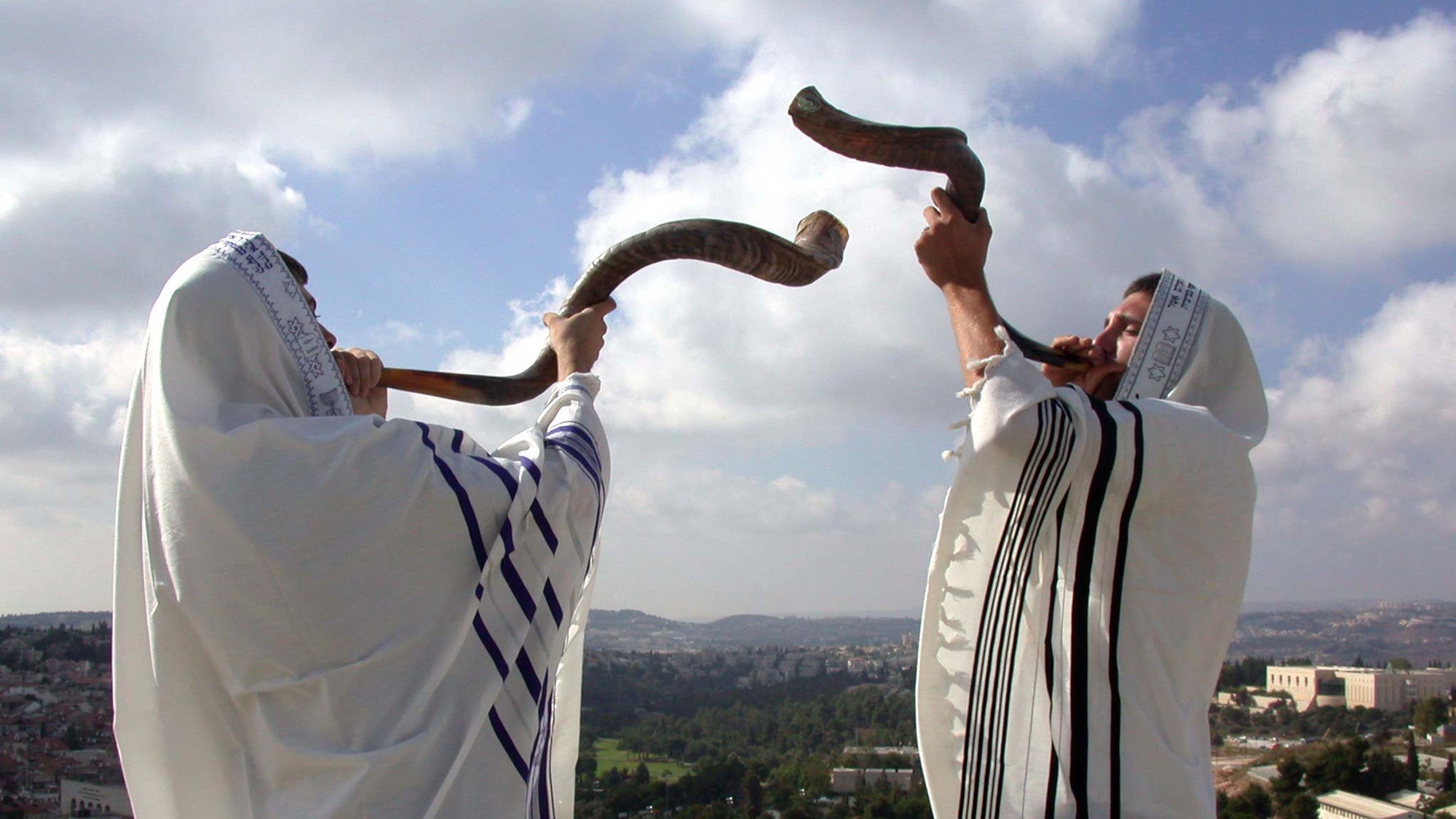Home>Special Themes>How Do I Celebrate Advent


Special Themes
How Do I Celebrate Advent
Published: February 13, 2024
Jason DeRose, Managing Editor at Christian.net, uses his expertise in religion and journalism to deepen understanding of faith's societal impacts. His editorial leadership, coupled with a strong academic background, enriches the platform’s diverse content, earning him recognition in both journalism and religious circles.
Discover special themes and meaningful ways to celebrate Advent with our helpful guide. Explore traditions, activities, and more to make this season memorable.
(Many of the links in this article redirect to a specific reviewed product. Your purchase of these products through affiliate links helps to generate commission for Christian.net, at no extra cost. Learn more)
Table of Contents
What is Advent?
Advent, derived from the Latin word "adventus," meaning "coming" or "arrival," is a significant season observed in many Christian denominations leading up to Christmas. It typically begins on the fourth Sunday before Christmas Day and concludes on Christmas Eve. Advent marks the start of the liturgical year in Western Christianity and is a time of spiritual preparation and anticipation for the celebration of the birth of Jesus Christ.
During Advent, believers reflect on the dual nature of this season. Firstly, it serves as a time to commemorate the historical event of Jesus' birth in Bethlehem over two millennia ago. Secondly, it symbolizes the anticipation of the second coming of Christ, emphasizing the spiritual significance of hope, peace, joy, and love.
This period is characterized by a sense of expectancy and longing, as Christians prepare their hearts and minds to welcome the arrival of the Messiah. It serves as a reminder of the Old Testament prophecies foretelling the coming of a Savior and the fulfillment of God's promises. The themes of Advent, often represented by the lighting of candles on an Advent wreath, typically include hope, peace, joy, and love, with each candle symbolizing one of these virtues.
In essence, Advent is a time of spiritual reflection, repentance, and joyful anticipation. It encourages believers to focus on the true meaning of Christmas and to prepare their hearts to receive the gift of God's love in the form of Jesus Christ. This season invites individuals to embrace a spirit of humility, gratitude, and reverence as they await the celebration of the birth of the Savior.
Overall, Advent serves as a poignant reminder of the profound significance of Christ's birth and the hope it brings to the world. It encourages believers to engage in acts of kindness, generosity, and compassion, embodying the spirit of the season and spreading joy to those around them.
Read more: How Is Advent Celebrated In Mexico
The History of Advent
The history of Advent can be traced back to the early centuries of Christianity, with its origins rooted in the practices of the Western Church. The precise establishment of Advent as a liturgical season is not definitively documented, but its emergence can be linked to the gradual development of the Christian calendar and the observance of significant events in the life of Jesus Christ.
The earliest historical references to a period of preparation before Christmas date back to the 4th and 5th centuries. During this era, the Church Fathers emphasized the importance of spiritual readiness and penitence in anticipation of the celebration of Christ's birth. This preparatory period varied in duration and practices across different regions, with some communities observing fasts and special prayers as part of their spiritual preparations.
The formalization of Advent as a distinct liturgical season began to take shape in the medieval period. The Council of Tours in 567 AD is often cited as one of the earliest official acknowledgments of the Advent season, where the church prescribed a fast during the weeks leading up to Christmas. Over time, the observance of Advent evolved to encompass a broader range of spiritual disciplines, including prayer, reflection, and acts of charity.
The structure of Advent as a four-week period, beginning on the Sunday closest to the feast of St. Andrew (November 30th), gradually became standardized in the Western Church. The liturgical calendar designated this time as a period of solemn reflection and joyful expectation, emphasizing the themes of hope, peace, joy, and love through the lighting of Advent candles.
Throughout history, the observance of Advent has undergone various adaptations and interpretations within different Christian traditions. While the Western Church predominantly embraced the observance of Advent, its significance also resonated with Eastern Christian communities, albeit with distinct emphases and practices.
In contemporary times, the observance of Advent continues to hold a central place in the liturgical calendars of many Christian denominations. It serves as a poignant reminder of the historical and spiritual significance of Christ's coming, inviting believers to engage in a season of introspection, spiritual renewal, and joyful anticipation.
The rich history of Advent underscores its enduring relevance as a season of profound spiritual significance, uniting believers across generations in the shared anticipation of the coming of the Savior.
Advent Traditions Around the World
Advent is celebrated with diverse and vibrant traditions across the globe, reflecting the rich cultural tapestry of different communities. These traditions not only honor the spiritual significance of the season but also showcase the unique customs and practices that have been passed down through generations.
In Germany, the tradition of the Advent wreath, known as the Adventskranz, holds a special place in the hearts of many families. This wreath typically consists of evergreen branches adorned with four candles, one for each Sunday of Advent. Families gather around the wreath each Sunday, lighting a candle and engaging in prayers and reflections, fostering a sense of togetherness and spiritual contemplation.
In Mexico, the observance of Advent is marked by the vibrant tradition of Las Posadas. This nine-day celebration reenacts the journey of Mary and Joseph as they sought shelter in Bethlehem. Each evening, processions and reenactments take place, culminating in a feast on Christmas Eve. This tradition not only emphasizes the themes of hospitality and community but also serves as a poignant reminder of the humble circumstances surrounding the birth of Jesus.
In Ethiopia, the observance of Advent, known as the fast of Tsom, holds deep cultural and religious significance. This fasting period, which lasts for 43 days, involves abstaining from meat and dairy products. The culmination of the fast is celebrated with the grand festival of Ganna, marked by colorful processions, music, and traditional Ethiopian dishes. This tradition underscores the spiritual discipline and joyful anticipation that characterize the Advent season.
In the Philippines, the tradition of Simbang Gabi, or Night Mass, is a cherished part of the Advent observance. This tradition involves attending early morning Masses from December 16th to 24th, culminating in the midnight Mass on Christmas Eve. The festive atmosphere, characterized by traditional Filipino delicacies and joyful gatherings, exemplifies the deep spiritual devotion and communal celebration that define the Filipino Advent experience.
In Sweden, the observance of Advent is intertwined with the tradition of Lucia Day, a festival of light that honors St. Lucia, the bearer of light. On December 13th, young girls don white robes and wreaths of candles, symbolizing hope and the triumph of light over darkness. This tradition radiates a sense of warmth and hope, illuminating the winter season with its message of joy and renewal.
These diverse traditions exemplify the universal themes of hope, peace, joy, and love that are central to the Advent season. They serve as a testament to the enduring significance of this sacred time, uniting communities around the world in the shared anticipation of the coming of the Savior.
How to Celebrate Advent at Home
Celebrating Advent at home provides a meaningful opportunity for individuals and families to engage in spiritual reflection, foster a sense of togetherness, and embrace the timeless traditions that define this sacred season. Here are some heartfelt ways to create a memorable Advent experience within the comfort of your home:
Create a Sacred Space
Designate a special area in your home where you can gather for Advent observances. This space can feature an Advent wreath, a nativity scene, and other meaningful symbols of the season. Lighting a candle on the Advent wreath each Sunday can serve as a focal point for prayers and reflections, fostering a sense of reverence and anticipation.
Read more: Why Do We Celebrate Advent?
Daily Devotions
Engage in daily devotions as a family or individually. This can include reading Advent-themed passages from the Bible, meditating on the spiritual significance of the season, and offering prayers of gratitude and hope. Consider incorporating traditional Advent hymns and music to create a serene and uplifting atmosphere.
Advent Calendar
Utilize an Advent calendar to count down the days leading up to Christmas. Whether it's a traditional calendar with doors to open or a DIY version, the anticipation of revealing a new surprise each day can infuse the season with joy and excitement. Consider incorporating small acts of kindness or charitable deeds into your Advent calendar to emphasize the spirit of giving.
Family Activities
Participate in activities that embody the themes of Advent, such as acts of kindness, charitable giving, and spending quality time together. This can include volunteering as a family, creating handmade decorations, or engaging in meaningful conversations about the true meaning of Christmas. Encourage children to actively participate in these activities to instill a sense of compassion and generosity.
Reflect on Hope, Peace, Joy, and Love
Each week of Advent is traditionally associated with a specific theme: hope, peace, joy, and love. Take time to reflect on these themes as a family, discussing what they mean in the context of your lives and the world at large. Encourage open dialogue and expressions of gratitude, fostering a sense of unity and understanding.
By embracing these practices, families can create a nurturing and spiritually enriching environment within their homes, fostering a deeper appreciation for the true essence of the Advent season. This intentional observance can serve as a source of inspiration and renewal, nurturing the bonds of love and faith within the family unit.
Read more: What Do We Celebrate On Advent
Advent Wreaths and Candles
The Advent wreath, with its symbolic significance and timeless traditions, holds a central place in the observance of the Advent season. This cherished symbol serves as a visual representation of the spiritual journey leading up to Christmas, embodying the themes of hope, peace, joy, and love.
Typically crafted from evergreen branches, the circular shape of the wreath symbolizes the eternal nature of God's love and the unending cycle of the liturgical year. The vibrant greenery also signifies the enduring life and vitality found in Christ, even amidst the winter season's dormancy.
Adorned with four candles, the Advent wreath represents the four weeks of the Advent season. Each candle holds its own significance, with three purple candles symbolizing hope, peace, and joy, and a pink candle representing love. Additionally, a white candle, known as the Christ candle, is often placed in the center of the wreath and is lit on Christmas Day, signifying the arrival of the Light of the World.
The lighting of the Advent candles is a cherished tradition that unfolds over the four Sundays of Advent. As each candle is lit, it illuminates the growing anticipation and spiritual preparation for the coming of Christ. The first candle, symbolizing hope, serves as a beacon of optimism and expectation, reminding believers of the promise of redemption and renewal. The second candle, representing peace, invites individuals to embrace tranquility and harmony amid the busyness of the season. The third candle, symbolizing joy, radiates a sense of celebration and gratitude, heralding the imminent arrival of the Savior. Finally, the pink candle, signifying love, embodies the profound message of God's unconditional love manifested in the birth of Jesus.
The act of lighting the candles on the Advent wreath fosters a sense of reverence and contemplation, providing a visual and symbolic focal point for prayers, readings, and reflections. Families and communities gather around the wreath, engaging in meaningful rituals that deepen their connection to the spiritual essence of the season.
The Advent wreath and candles serve as poignant reminders of the profound significance of Christ's birth and the hope it brings to the world. This cherished tradition unites believers in a shared journey of spiritual preparation, fostering a sense of unity and anticipation as they await the celebration of the birth of the Savior.
Advent Calendars
Advent calendars, with their delightful blend of anticipation and surprise, have become a beloved tradition in many households, adding an extra layer of excitement to the Advent season. These calendars, often designed with 24 or 25 compartments, correspond to the days leading up to Christmas, with each compartment concealing a small treat or trinket. The act of opening a new compartment each day serves as a joyful countdown to the much-anticipated holiday.
While traditional Advent calendars feature doors that open to reveal hidden treasures, modern variations have expanded to include a diverse array of designs and contents. From intricately crafted wooden calendars to whimsical fabric versions, the creativity and artistry displayed in these calendars reflect the festive spirit of the season. Additionally, the contents hidden within the compartments have evolved beyond the realm of chocolates and candies to encompass a wide range of surprises, including miniature toys, inspirational quotes, and acts of kindness to be performed each day.
The Advent calendar experience extends beyond mere indulgence, as it provides an opportunity for families and individuals to engage in acts of generosity and reflection. Some Advent calendars incorporate charitable initiatives, encouraging participants to donate to a designated cause or perform daily acts of kindness, thereby infusing the season with the spirit of giving and compassion.
For those seeking a more personalized approach, DIY Advent calendars offer a creative outlet for crafting unique and meaningful countdowns. Handcrafted calendars can be tailored to reflect individual interests and values, incorporating personalized messages, family activities, or cherished mementos to be discovered each day. This hands-on approach not only adds a personal touch to the Advent experience but also fosters a sense of togetherness and creativity within the family.
The Advent calendar tradition transcends age barriers, captivating the hearts of both children and adults alike. For children, the daily ritual of opening a new compartment instills a sense of wonder and excitement, fostering a spirit of joyful anticipation. Meanwhile, adults find joy in reliving the nostalgic charm of Advent calendars, embracing the simple yet profound pleasure of savoring small moments of delight each day.
In essence, Advent calendars serve as a delightful and meaningful way to infuse the season with joy, generosity, and a sense of shared anticipation. Whether through traditional store-bought calendars, innovative DIY creations, or charitable initiatives, these countdowns offer a daily reminder of the approaching celebration of Christ's birth, fostering a spirit of unity and delight within the home.
Advent Music and Hymns
Advent music and hymns play a profound role in enriching the spiritual tapestry of the Advent season, infusing the atmosphere with melodies that resonate with the themes of hope, peace, joy, and love. These musical expressions serve as a timeless bridge, connecting believers to the profound significance of Christ's coming and fostering a sense of reverence and anticipation.
The repertoire of Advent music encompasses a diverse range of traditional hymns and contemporary compositions, each carrying its own evocative message. From the hauntingly beautiful strains of "O Come, O Come, Emmanuel" to the jubilant notes of "Come, Thou Long-Expected Jesus," these hymns encapsulate the longing and anticipation embedded within the Advent journey. The poignant lyrics and stirring melodies evoke a sense of introspection, inviting listeners to immerse themselves in the timeless narrative of the Savior's birth.
In addition to hymns, instrumental compositions such as "The Messiah" by George Frideric Handel and "Advent Suite" by Johann Sebastian Bach offer transcendent musical interpretations of the Advent narrative. These masterpieces, characterized by their emotive depth and spiritual resonance, serve as a testament to the enduring power of music in conveying the profound themes of the season.
Furthermore, contemporary Advent music continues to enrich the musical landscape, offering fresh interpretations of age-old themes. Compositions such as "Light of the World" by Lauren Daigle and "Come, Thou Fount of Every Blessing" by Sufjan Stevens infuse the Advent season with modern expressions of faith and devotion, resonating with a new generation of believers while honoring the timeless traditions of the season.
The act of singing and listening to Advent music serves as a transformative experience, fostering a sense of communal worship and spiritual contemplation. Whether within the hallowed halls of a church or the intimate setting of a family gathering, the melodies of Advent music unite voices in harmonious celebration, creating a sacred space for reflection and reverence.
In essence, Advent music and hymns stand as a testament to the enduring power of music in conveying the profound themes of the season. These timeless melodies and evocative compositions serve as a poignant reminder of the spiritual significance of Christ's coming, enriching the Advent journey with beauty, reverence, and a sense of shared anticipation.
Advent Activities for Families
Engaging in Advent activities as a family provides a wonderful opportunity to create lasting memories and deepen the spiritual significance of the season. These activities not only foster a sense of togetherness but also instill a profound understanding of the themes of hope, peace, joy, and love that define the Advent journey.
Read more: Why Is Advent Celebrated
Advent Wreath Making
Gather as a family to create a personalized Advent wreath. This hands-on activity allows each family member to contribute to the creation of a meaningful centerpiece for the season. Encourage creativity by incorporating natural elements such as pinecones, berries, and ribbons, infusing the wreath with a touch of individuality.
Acts of Kindness Calendar
Craft an Acts of Kindness Advent calendar as a family. Brainstorm and compile a list of daily acts of kindness to be performed throughout the Advent season. These acts can range from writing letters of appreciation to frontline workers to volunteering at a local charity. Each day, select an act of kindness from the calendar, fostering a spirit of generosity and compassion.
Nativity Scene Display
Set up a nativity scene as a family, allowing children to actively participate in arranging the figures and creating a meaningful tableau. Use this opportunity to recount the story of the birth of Jesus, emphasizing the spiritual significance of the nativity and its central place in the Advent narrative.
Advent Storytelling
Gather each evening for Advent storytelling sessions, where family members take turns sharing stories related to the season. These stories can range from traditional Advent narratives to personal anecdotes of hope, peace, joy, and love. Encourage open dialogue and reflection, fostering a sense of unity and understanding.
Read more: Which Countries Celebrate Advent
Family Prayer and Reflection
Designate a specific time each day for family prayer and reflection. Create a serene atmosphere by dimming the lights and gathering around the Advent wreath. Engage in prayers, readings, and discussions centered on the themes of Advent, fostering a sense of spiritual connection and reverence.
Baking and Sharing
Spend time as a family baking traditional Advent treats such as gingerbread cookies, stollen, or fruitcake. Once baked, share these treats with neighbors, friends, or those in need, spreading joy and warmth within the community. This activity embodies the spirit of giving and fosters a sense of communal celebration.
By participating in these activities, families can cultivate a deeper appreciation for the spiritual essence of the Advent season. These intentional practices not only create cherished moments of togetherness but also instill a sense of gratitude, compassion, and anticipation as the family awaits the celebration of the birth of the Savior.
The Spiritual Significance of Advent
The spiritual significance of Advent extends far beyond the anticipation of Christmas Day; it encapsulates a profound journey of faith, hope, and renewal. At its core, Advent serves as a poignant reminder of the timeless promises of God and the transformative power of the birth of Jesus Christ.
Central to the spiritual significance of Advent are the themes of hope, peace, joy, and love, symbolized by the lighting of the Advent candles. Each week, as a new candle is kindled, believers are invited to reflect on these foundational virtues, embracing them as guiding beacons amid the complexities of life. The first candle, representing hope, embodies the unwavering optimism that permeates the Advent season, reminding individuals of the promise of redemption and restoration. The second candle, symbolizing peace, calls for a deep sense of tranquility and harmony, inviting believers to seek solace in the midst of turmoil. The third candle, radiating joy, serves as a testament to the abounding gladness that accompanies the imminent arrival of the Savior. Finally, the pink candle, signifying love, encapsulates the profound message of God's unconditional love manifested in the birth of Jesus, inspiring acts of compassion and selflessness.
Moreover, the spiritual significance of Advent lies in its capacity to foster a spirit of introspection and spiritual renewal. As believers engage in prayers, readings, and reflections, they are encouraged to examine their hearts and minds, seeking a deeper connection with the divine. This introspective journey serves as a catalyst for personal growth, prompting individuals to realign their priorities and embrace a spirit of humility and gratitude.
Furthermore, Advent holds a dual significance, encompassing both the historical event of Christ's birth and the anticipation of His second coming. This duality underscores the profound message of redemption and salvation, inviting believers to prepare their hearts for the ultimate fulfillment of God's promises. The season of Advent thus becomes a time of joyful anticipation, as believers eagerly await the triumphant return of the Messiah, embracing the spiritual significance of hope and renewal.
In essence, the spiritual significance of Advent transcends the boundaries of time and tradition, resonating with believers across generations. It serves as a poignant reminder of the enduring promises of God, the transformative power of faith, and the abiding presence of hope, peace, joy, and love in the human experience. As believers embark on this sacred journey, they are enveloped in the timeless embrace of God's love, finding solace, renewal, and profound spiritual significance in the anticipation of the birth of the Savior.











